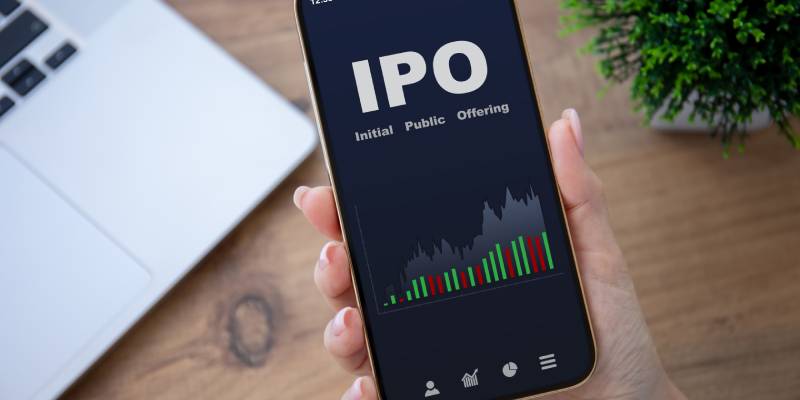The term “blockchain” has recently become popular in trade finance. It offers a lot of benefits in terms of safe transactions and greater efficiency. In my opinion, as the technology develops, it is crystal clear that it should take the course and overcome numerous obstacles to unlock its full potential. When I researched, I found that blockchain development in trade finance projects and initiatives leads to a “digital island problem”. Various platforms cannot properly connect with one another as a result. It is becoming increasingly apparent that no single network will control the whole sector. Instead, it will be a collection of networks. Therefore compatibility or, in other terms called, interoperability between them will be crucial.
An Overview of the Power of Standardization, Digitalisation & Interoperability
According to the World Economic Forum (WEF), the three most important layers of blockchain interoperability are:
- Business models
- Platforms
- Infrastructures
Firms and groups creating blockchain solutions can maximize value for their industry by prioritizing interoperability and fostering connectivity across all three layers mentioned above.
It is also important to work on creating international norms. There are a number of groups working on developing the use of blockchain in international trade, such as:
- DSI (Digital Standards Initiative of the International Chamber of Commerce)
- UN/CEFACT (United Nations Centre for Trade Facilitation and Electronic Business)
- BAFT (Bankers Association for Finance and Trade)
The effectiveness of blockchain operations in trade finance relies on the establishment and broad adoption of standards that apply across the whole supply chain. Sharing the data about transactions in a safe manner is necessary, which can be done through digital documents. Furthermore, there can be no barriers to digitalization in the future of trade finance infrastructure.
There are a variety of specialized platforms with their own guidelines in businesses like shipping, banking, buying, and mining. Most important of all, the industry as a whole needs to settle with the standards. While the majority of documents can be standardized, some transactions are quite different from the rest and will always need their own documentation procedures. And you know what? This is where AI (artificial intelligence) comes into play.
All About Navigating Legal Complexities in Trade Finance
The legal system faces a few obstacles while using blockchain in trade finance. They are:
- Lack of clarity whether electronic signatures and papers will be legally recognized.
- Recognized standards and laws in certain nations do not cover digital transactions and electronic signatures. So, using paper is the only option for dealing with any jurisdiction.
- Widespread lack of legal acknowledgement of digital promissory notes
The United Nations Committee on International Trade Law (UNCITRAL) has created the MLETR (Model Law of Electronic Transferable Records) to address the last point mentioned above and facilitate the legitimate use of ETRs in international and domestic contexts. However, if major financial powers were to implement the UNCITRAL MLETR, it would create a standardized legal structure for the digital transfer of records using blockchain technology.
As per the reports dated October 2022, only seven jurisdictions have adopted the MLETR. They are:
- Bahrain in 2018
- Kiribati in 2021
- Singapore in 2021
- Belize in 2021
- Abu Dhabi Global Market in 2021
- Paraguay in 2021
- Papua New Guinea in 2022
The UK government submitted the Electronic Trade Documents proposal to the parliament on the same date. With regards to the WTO Joint Statement Initiative on eCommerce, a group of WTO nations are addressing the validity of electronic documents like electronic invoices and digital signatures.
In order to carry out a transaction in a foreign country, firms must come up with new digital workarounds to overcome the outdated legal frameworks that still apply across many nations. Till a time these outdated policies are altered, they will:
- Keep adding enormous complexity to the entire process
- Reduce the efficacy of blockchain
However, finding an appropriate balance between management is the key to resolving this problem. Even though many accept that there should be some regulation, it’s important to strike that so-called appropriate balance. The COVID-19 pandemic increased awareness of the necessity to change laws to facilitate digital trade. Many nations, including the United Kingdom, were willing to enforce digital trade laws.
Also Read: The Game-Changer for Cross-Border Trade Finance: MLETR
Balancing Unique Needs, Data Privacy & Long-term Obsolescence Risks for MSMEs
Let us now delve into another difficulty which takes us to solutions that may not be tailored to the demands of MSMEs. Many blockchain technology products are exclusively designed to serve only high-value customers or a huge volume of clients. This is because they may create the greatest shot for a positive return on the initial expenditure to launch a complete operational blockchain network.
Initiatives catering to the special needs of MSMEs may have challenges turning a profit until they establish themselves in the market. We.trade, a European company focused on SMBs, went bankrupt in May 2022. As a result, it might lead to small businesses utilizing solutions not designed for their specific requirements. Data protection and privacy laws must always be considered when we discuss blockchain as a connectivity technology. It might be challenging to eliminate the data once added to the system, even though blockchain technology is designed to be tamper-proof.
If information related to regulation is broadcasted on a blockchain technology platform, issues may develop with privacy legislation and corporate or banking secrecy. Last but not least, blockchain systems must provide connectivity and transparency to the appropriate parties to maximize accessibility. Although advancements in quantum computing bring in new possibilities, they pose a long-term danger to blockchain because of its dependence on algorithms and encryption for flexibility.
Closure
I have observed that the COVID-19 pandemic has brought attention to the need for digital trade, thereby highlighting the importance of striking a balance between regulation and innovation. By now, you would have understood that blockchain technology has many advantages. The adoption of blockchain technology in trade finance applications is reliant on the system’s ability to adequately solve the problems of digital transactions, signatures and documents. Finally, my analysis is that the data protection and privacy rules must be taken into account when deploying blockchain to enable connectivity.
Trade finance advice provides a comprehensive insight into finance companies, regardless of whether they use Bitcoin or blockchain. Visit Trade Finance Advice website for more insights.



